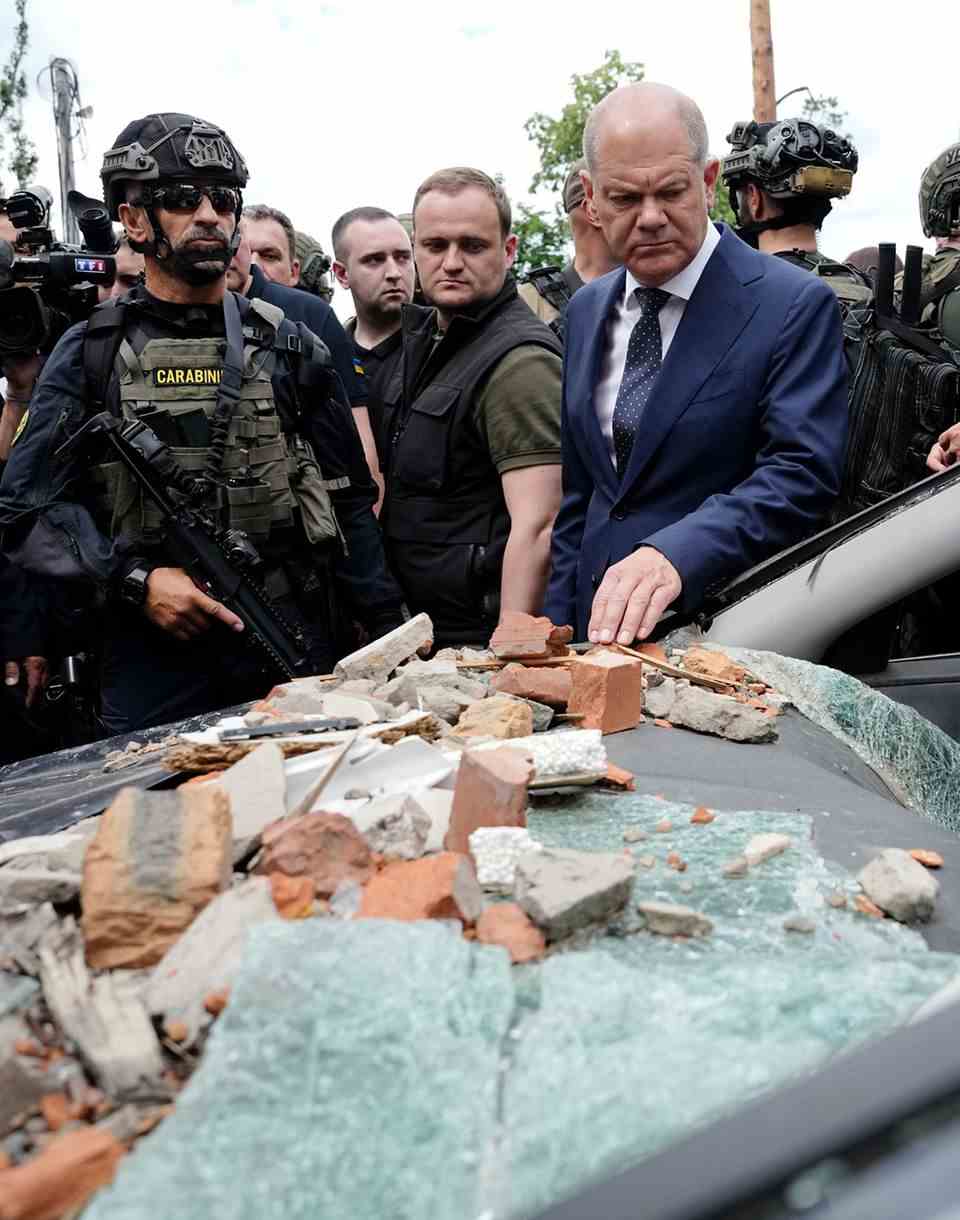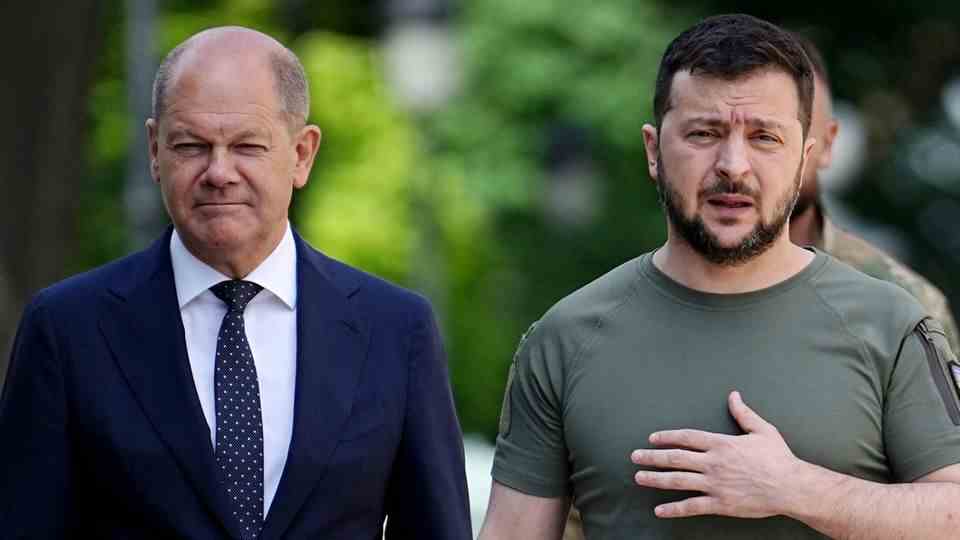analysis
Trip to Kyiv
A result of the Scholz visit that cannot (yet) be measured
French President Emmanuel Macron, Italy’s Prime Minister Mario Draghi and Chancellor Olaf Scholz (from left) visit the destroyed Irpin in the Kyiv area
© Ludovic Marin/AP/Picture Alliance
Better late than never: Chancellor Olaf Scholz (SPD) traveled to Kyiv. His visit could possibly have an effect that has already been observed with previous visitors.
In hindsight, it is of course possible to discuss what Olaf Scholz had in his luggage during his long-awaited visit of actual importance for Ukraine, but this much could be said beforehand: the first politician of rank and name to travel to the war zone was Certainly not the chancellor.
The latecomer had traveled to Kyiv on the night train, with a delay of several weeks or even months for critics. Hardly any text on the significant trip, which was preceded by many hurdles, came without the bon mot that in the aisles of the special train there is an advertising poster put up by the Ukrainian railway company: “Railway diplomacy”, it says, with photos of top politicians, who had already taken those tracks before Scholz. There are some.
Scholz had hesitated for a long time to even embark on such a journey. First of all, a travel dispute about Federal President Frank-Walter Steinmeier had to be settled, later declared the Chancellorhe will “not join a group of people who do something for a short in and out with a photo shoot”, but if “then it’s always about very specific things”.
In concrete terms, Scholz finally campaigned for Ukraine to become a candidate for accession to the European Union – albeit with words that were typically vague: “Germany is in favor of a positive decision in favor of Ukraine,” said the Chancellor in Kyiv. gift. However, it was heard very carefully that Scholz did not promise further heavy weapons deliveries, as Ukraine had previously requested. EU yes, tanks no – a double message, which also caused disappointment.
That was expectable. With his claim to only travel to Ukraine for “very specific things”, Scholz had raised high expectations that could only be disappointed in practice. With every day that the trip didn’t take place, the bar was raised a few centimeters again. But there is another result of the Scholz visit that cannot (yet) be measured.
Olaf Scholz experiences the “brutality”
The chancellor has seen with his own eyes what the Russian war of aggression is doing to Ukraine. He was in devastated Irpin, saw the “brutality of Russian warfare of aggression simply bent on destruction and conquest,” he said. The destruction in Irpin is a “very important reminder” that something needs to be done.
His petrified facial expressions spoke volumes, as did those of his fellow travelers. Faced with the destruction, France’s President Emmanuel Macron spoke of a “massacre” and “war crimes”, while Italy’s Prime Minister Mario Draghi promised: “We’ll rebuild everything.”

Chancellor Olaf Scholz (r., SPD) looks at a badly damaged car in Irpin in the greater Kyiv area
© Kay Nietfeld/ / Picture Alliance
During the visit, the air raid alarm was raised twice. At the final press conference, the EU heads of state apparently heard a rumble in the sky, which caused them to look irritated.
So the chancellor got a glimpse of what Ukraine has been going through for the past 115 days, with no end in sight. That can make a difference, as previous visits have shown.
After the then Green Party co-leader and current Vice Chancellor Robert Habeck visited the front line in eastern Ukraine in May 2021, he demanded arms deliveries to Ukraine – for which he was exposed to sharp criticism at the time. Federal Foreign Minister Annalena Baerbock (Greens), who was the first German member of the government to travel to the country after the outbreak of war, recently found the words that Scholz has not uttered with such clarity to this day: “Ukraine must win.”
Before traveled the chairmen of the Bundestag committees for defense (Marie-Agnes Strack-Zimmermann, FDP), foreign affairs (Michael Roth, SPD) and Europe (Anton Hofreiter, Greens) to the war zone – since then, Strack-Zimmermann and Hofreiter in particular have never tired of reaching out for military aid for the Ukraine push and den to criticize the Chancellor for his course.
In short: the visit to Ukraine obviously strengthened their attitude and their determination – while Scholz, in direct contrast, was again perceived as hesitant and procrastinating.
True, his visit to Kyiv was also a photo opportunity, inevitably. But perhaps the visit was also a confession that a photo session in a bombed war zone can have symbolic radiance. At least ten pictures of the trip were distributed via the Chancellor’s official social media channels, three on Twittersix on Instagram and one up Facebook. It remains to be seen what radiance the visit to Scholz could develop.





